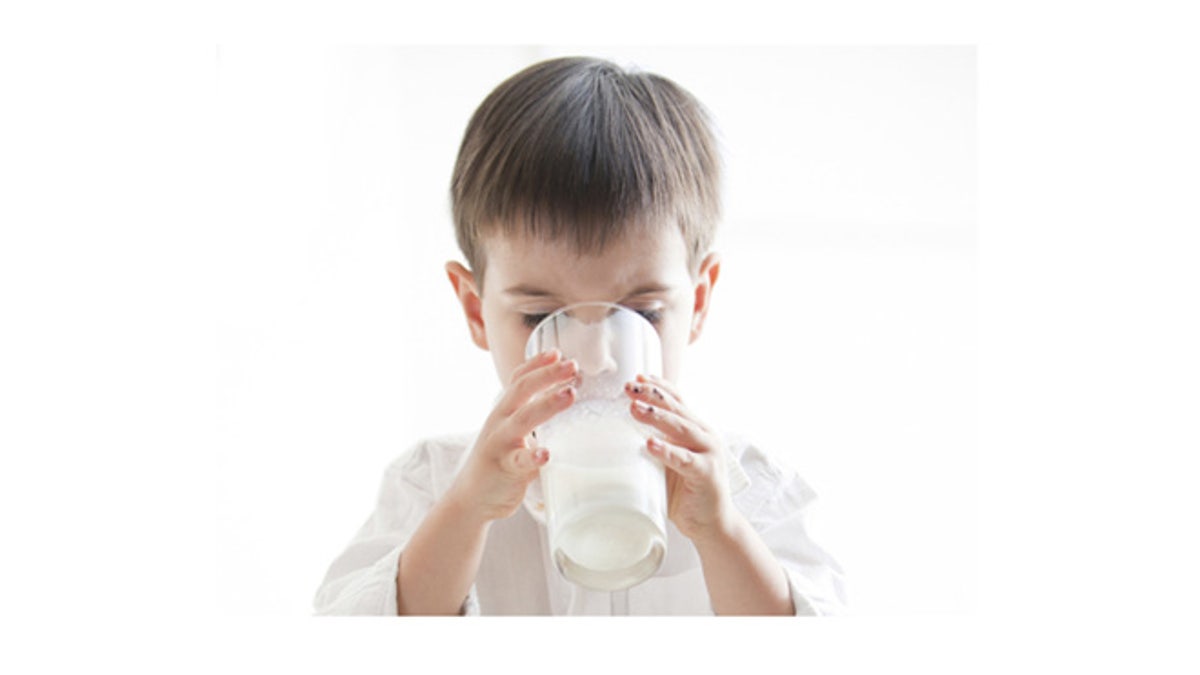
Could whole milk help win the fight against obesity? (iStock)
It’s hard to resist a glass of cold, creamy whole milk with a warm brownie or a piece of pie. But resist we do, because for 50 years scientists have been presenting evidence linking fats, especially saturated fats like those found in animal products, with cardiovascular disease.
Fat-phobia has become a dietary axiom.
Pediatricians’ advice to parents to switch to low-fat or skim milk has become the norm. Some school districts in Connecticut are even considering banning whole milk for small children.
Yet new studies show that drinking low-fat milk is like throwing out the baby with the bathwater – and can even lead to obesity.
A 2013 long-term University of Virginia study published in the Archives of Disease in Childhood shows that skim milk actually makes children heavier than whole milk.
Drs. Mark DeBoer and Rebecca Schafer evaluated data from 10,700 children between 2 and 4 and concluded that “children given skim or one-percent milk were more likely to become overweight and obese.”
This “striking” link between low-fat milk and obesity was “present in every single racial ethnic group and every single social strata,” DeBoer says on UVA’s website.
UVA’s findings echoed a 2005 Harvard study that found that one-percent milk led to greater weight gain in 9- to 14-year-olds than whole milk. A 2010 Journal of the American Dietetic Association study found that higher intake of whole milk at age 2 “was associated with a slightly lower BMI.” That’s because whole milk may be “a better satiety agent” (makes you feel full), thus “holding down other calorie consumption,” DeBoer says.
A Washington State University professor goes further. In the journal PLOS One, Professor Charles M. Benbrook concludes that organic/pasture-raised whole milk has more heart-healthy omega-3 fatty acids than milk from cows that are raised conventionally.
A cow’s four-chambered stomach system produces milk (and beef) with higher omega-3 levels when it digests grass. But over the last 50 years we’ve shifted cows, chickens and farm-raised fish to a corn diet, Benbrook says. And that, he says, has “altered their fatty profiles.”
The closer to zero-fat milk you go, “the more you eliminate fatty acid benefits,” he says. You also eliminate naturally occurring Vitamins A and D, which are then added synthetically. And you add powdered milk, which contains artery-hardening oxidized cholesterol, for “mouth feel.”
This makes skim milk a highly processed, additive-laden, synthetic, vitamin-laced beverage that – oh, yeah – has protein. Even Dr. Oz says skim milk increases weight because “once you take out the fat from milk, all you have left is sugar.”
But old habits die hard.
The Department of Agriculture and American Heart Association still recommend swapping whole-fat dairy for low-fat/skim. The American Academy of Pediatrics still recommends that children 2 and older drink only low-fat milk. It also recommends low-fat or skim milk for even younger children with family histories of heart disease and high cholesterol or at risk of obesity.
And the Connecticut legislature is considering a bill that would ban whole and two-percent milk for infants, pre-schoolers, children in day care and even those in group homes.
State bill No. 48, “An Act Concerning Nutrition Standards for Child Care Settings,” stipulates that day care facilities may provide whole milk to a child only if it is “medically required” and “documented by such child’s medical provider.” Pack a doctor’s note if you want junior to drink contraband.
And Connecticut isn’t alone. New York City’s Department of Education, the largest school system in the U.S. with over 1.1 million students, banned whole milk in 2006 and butter in 2008.
Unlike the War on Drugs, the War on Whole Milk is making steady progress.
The preponderance of newer data begs the question: Why do most pediatricians and governmental and medical institutions recommend low-fat/no-fat milk?
Walter Willett, MD, Ph.D, chairman of the Department of Nutrition at the Harvard School of Public Health and widely respected as one of the world’s most influential nutritionists, pioneered the distinction between “good” fats (avocado, salmon, walnut) and “bad” fats (hydrogenated and trans-fats).
Asked when science will finally inform food policy, he replied by email: “Hopefully we might get there with the 2015 dietary guidelines.”
Willett said he needs more evidence before he’d put dairy in the “optimally healthy fat category, even if pasture-raised,” and he recommends low-to-moderate dairy intake.
“It seems that it doesn’t make much difference whether it is low- or high-fat,” he said. “[Low-fat dairy] has no effect on heart disease rates,” is often “loaded with sugar” and is more strongly associated with “risk of acne,” he wrote. He added that he prefers yogurt, which he says may fight obesity and diabetes.
Well-meaning legislation may actually increase childhood obesity, not reduce it. A little more science might do a child’s body good.
Elena Ferretti is a journalist who covers food fads and trends and tracks the way Americans eat.
